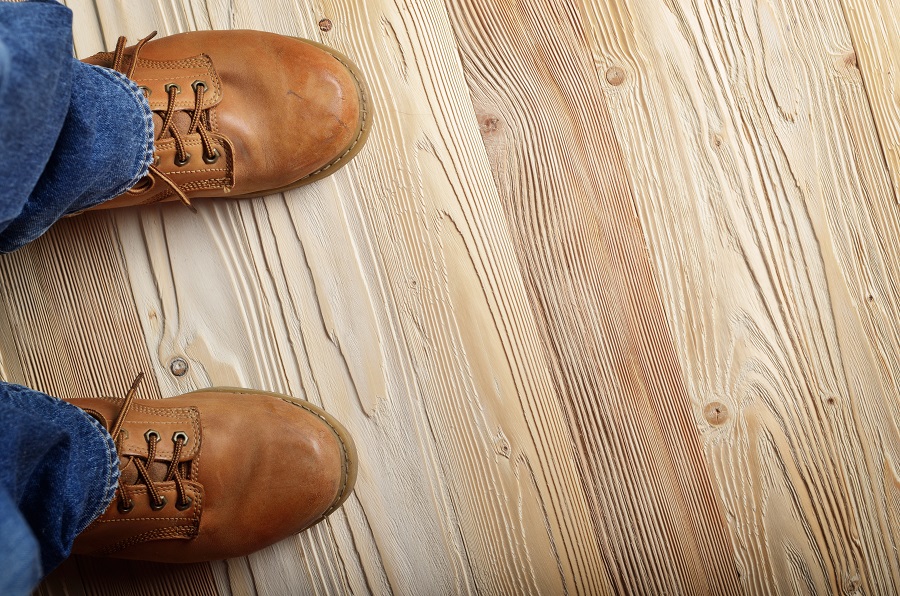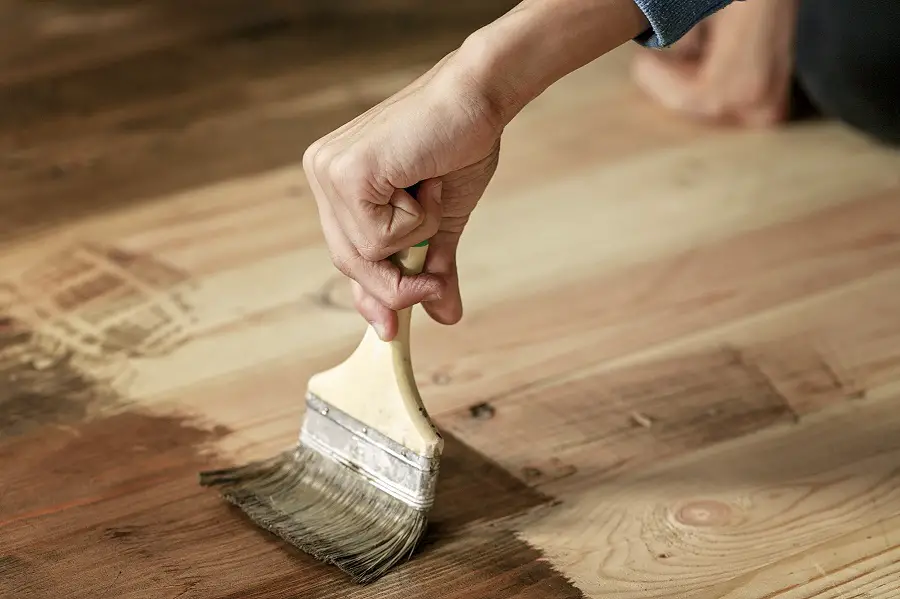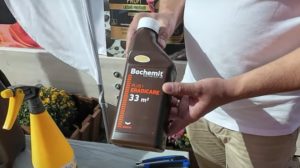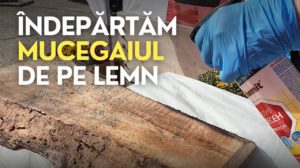This is the situation a reader went through the other day and asked for our help. The ash flooring was too light for what he wanted and he decided to darken the color by using an exterior alkyd lacquer. For protection he then used a special hardened floor varnish from a different manufacturer than the varnish. After the varnish dried, he found that it was peeling. He wanted to know what he could do to solve the problem and what the wood could be stained with so that the floor varnish would adhere. Unfortunately, the solution was to start all over again by scraping the floor and refinishing it with the right products. Why did it all happen? Because the varnish and lacquer were not compatible.

Incompatibility between layers should be avoided so that you don't end up having to start from the beginning
It's an issue that I always insist on. When I have to repaint the surface or we use finishing products that we don't know if we can overlap, we need to check their compatibility. The check is done in a more hidden area if refinishing or on a separate piece of wood if you are refinishing an object from scratch (as with parquet flooring above). It's a step that doesn't take much time, but it saves a lot of problems later.
In this case a varnish was used for staining, which is mainly recommended for exterior use. In addition to the stain, the varnish contains resin which protects the wood against water and sunlight. In order to avoid incompatibility between layers, the resin has to be compatible, to match the one in the varnish. In this case, it didn't. And how do we know if they're compatible, you ask, since we're not all going to take chemistry before we paint a chair? By using materials from the same manufacturer, recommended to be used together, or by reading the product data sheet. It's now very easy to find the technical data sheet for any product on the web. There you can find recommendations on how to use the product, what the wood should look like and what can be applied over it.
How to color wood so it can be coated with any varnish
When it comes to staining wood, things can be simplified. You can use simple stains, those that contain only dye and water or dye and solvent. They are readily available in any DIY store or from wood varnish and paint distributors and do not contain resins. Once completely dry, they can be overcoated with any varnish without risk of incompatibility between coats.
But the problem here may be uneven coloring. Because there is no resin to regulate absorption, color uniformity will depend directly on how well the wood has been prepared beforehand. Preparation means sanding with sandpaper of the right grit and dusting with a cloth to completely remove fine dust from the wood. Last sanding for wood it is recommended to be done with sandpaper with a grain size between 180 and 220 or with medium abrasive sponge.
Staining the lake
Sometimes, no matter how hard we try to get a uniform stain, the wood stains. Some woods are more difficult to stain, such as fagul, poplar or spruce. In this case you can color the varnish. It is best to color only the varnish used for the first coat because with each coat applied, the color darkens. Staining is done using the simple stains I talked about above or color concentrates which can also be found in the stores. Of course, you have to take into account the nature of the solvent: in solvent-based varnishes, you use solvent-based varnish and in water-based varnishes, water-based varnish.
If only one coat of colored varnish is to be applied, it can be thinned (more varnish or stain and solvent can be added). Thanks to the resin the varnish will penetrate into the wood more controlled and the coloring will be uniform. After drying, the other coats of varnish can be applied without further precautions. If colored varnish is used for all coats, the added varnish should not exceed 20% because the varnish will lose its consistency and more coats will be needed to achieve the desired coating.

What is the solution?
In the case of frasin, the only solution was to remove the applied layers and rașchetarea again. After exfoliation the wood was left stained from the varnish and it was the only solution to restore its beauty. Next was sanding to get an even surface and staining with the stain. It should be no problem because ash is a hard wood that stains beautifully. After drying you will be able to apply the floor varnish without any incompatibility problems.
What should we take away from this experience?
- Use the entire finishing system (colorant, primer, varnish) from the same manufacturer
- It is compulsory to consult the technical data sheets (downloaded from the internet if you do not have them from the supplier) and instructions for use
- Test the compatibility of products separately before use
If you've had similar experiences I'd love you to share them with us. You can leave them below in the dedicated space. There you can also leave any additions or questions. I will certainly answer them.

































Hi,
This is exactly what I intend to do with the roof of my house, which is made of wood. After this winter, which in our area is never ending, I want to give life to wood again. Thank you very much for your recommendations, now I know what materials to buy and how to proceed. Thank you.
You're welcome!
Hello, on mine the lake has risen in places and either stopped drying in those vines or it has absorbed into the wood and bubbles have formed.
What can I do in this situation?
The lacquer used is from the same manufacturer.
Thanks for your time
Hello!
I think it was applied too thick and the air couldn't get out of the film. That explains the bubbles and raised lake, if the raised lake portions are not whitish. If they are whitish, there is a lack of adhesion which means the sanding was not done well.
If the varnish is too thick, the layer can be sanded until the bubbles are removed, after which another layer of varnish is applied. If there is a lack of adhesion, the varnish should be removed down to the wood and the finish re-applied. Take care when sanding the wood before applying varnish. It should not be done with paper finer than 180 and the wood should be sanded afterwards. And the first coat of varnish should be thinned more to get into the wood better.
All the best!
Hello. We have in the bedrooms triple finished hardwood flooring. After installation it was given with maintenance oil.. But 48 hours have already passed and the surface is still sticky.,
I think it was coated too thickly or the excess oil was not removed before it dried.. How could I fix it?
Hello!
I believe a linseed oil was used, not a special maintenance oil. If it doesn't dry even in the next few days it will have to be washed with turpentine or white spirit (petrosin, gas). Turpentine has a more pleasant smell, it is extracted from resin wood (from resin). It will be quite labour intensive and will involve smell inside. The smell of turpentine, in my opinion, is easier to bear. Solvents will not affect the initial coating. The factory made finish is very durable.
Wax is recommended for the maintenance of finished parquet. Oils are applied directly to the wood to absorb and protect it. To ensure maintenance, the oil must be specially formulated for this purpose, i.e. dry and filmy. If such a product has been used, either the application instructions have not been followed or the product has had a problem (out of warranty, manufacturing error).
All the best!
Hello!
I read your articles with great interest and find them very useful.
I have installed spruce wood in the house and would like some expert advice on how to protect the wood. What can we use? I don't want varnish, I'd like to darken it a bit with a bait or some oils. If you point me in the direction of a solution, I appreciate your help.
Hello!
Thanks for following us!
In this case, the best solution would be a special floor oil. It doesn't have the strength of floor varnish, but it is more resistant than other oils because it is specially formulated for such uses. Kreidezeit floor oil is one such oil that has the advantage that it is also natural, with no added chemicals. It is a blend of linseed oil and tung oil, the latter being responsible for the better scrub resistance needed for floors. Find here more information about it. For maintenance, you can use wax over oiled wood. The floor will take on a very pleasant silky sheen.
In terms of colour, the oil darkens the colour of the wood very slightly (the wood looks like it does when wet), but cannot be said to colour it. You have two possibilities: to lightly stain the oil (max.5%) so that the wood still shows or to stain the wood with the stain and then apply the oil. The oil can be stained with natural pigments, Kraidezeit pigments are a good and durable option (link here). For the stain, you can use simple solvent or water-based stains in the colour of your choice, available in DIY stores. After complete drying, even if they are water-based, they can be coated with oil.
Good luck!
Thank you very much for all the information you gave. We will go for the natural oil option. We wish you good health!